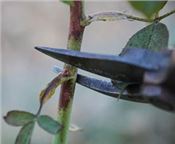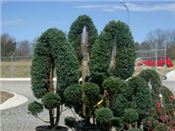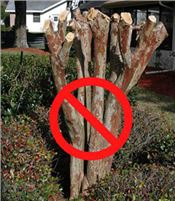Arkansas Yard & Garden Pruning Resources

Pruning is one of the most important aspects of gardening we have.
Before you grab the pruning shears, be able to answer three questions:
1. Why are you pruning?
2. When should you prune the specific plant you are growing?
3. How should the plant be pruned?
Timing is critical for flowering and fruiting plants.
In general, plants that bloom in the spring should be pruned immediately following blooming and plants that bloom in the summer should be pruned before growth begins in late February.
• There are a few exceptions to the rule such as gardenias and some hydrangeas.
• Roses, fruit trees, small fruits and ornamental grasses also have specific requirements for pruning.
Visit our spring pruning page for general monthly checklists.
General Tips

• Formal pruning requires much more work than a natural look in the landscape.
• One or two topiary plants can be enough in a landscape--too many and it will get too busy.
• Large shade trees should not be pruned by the home gardener, but knowing what is expected of a tree trimmer is important to avoid major damage to your trees.
• Make sure that you have clean, sharp pruning shears and that the size of the pruning tool fits the size of the branches you are pruning.
• Pruning paints or wound dressings are not needed, and in some cases can actually hinder the recovery time of the pruned areas.
Pruning Crapemyrtles

Crapemyrtles are probably the most incorrectly pruned plants we grow, with "crape murder" being the norm, versus the exception. Visit our pruning crapemyrtles page to watch a demonstration on how to properly prune one.
How to prune Crapemyrtles
Should I prune in winter? What about pruning cold-damaged plants?
If you have some damaged leaves after a cold snap, don't prune!
When heading into the winter season avoid pruning which would expose more of your plant to damage. Unless you see broken branches, leave the plant alone until spring. When temperatures get below freezing, your plants may look wilted or shriveled, but they are frozen. Frozen plants can be quite brittle, so leave them alone and wait for the temperatures rise above freezing. ∆
Content from University of Arkansas Extension